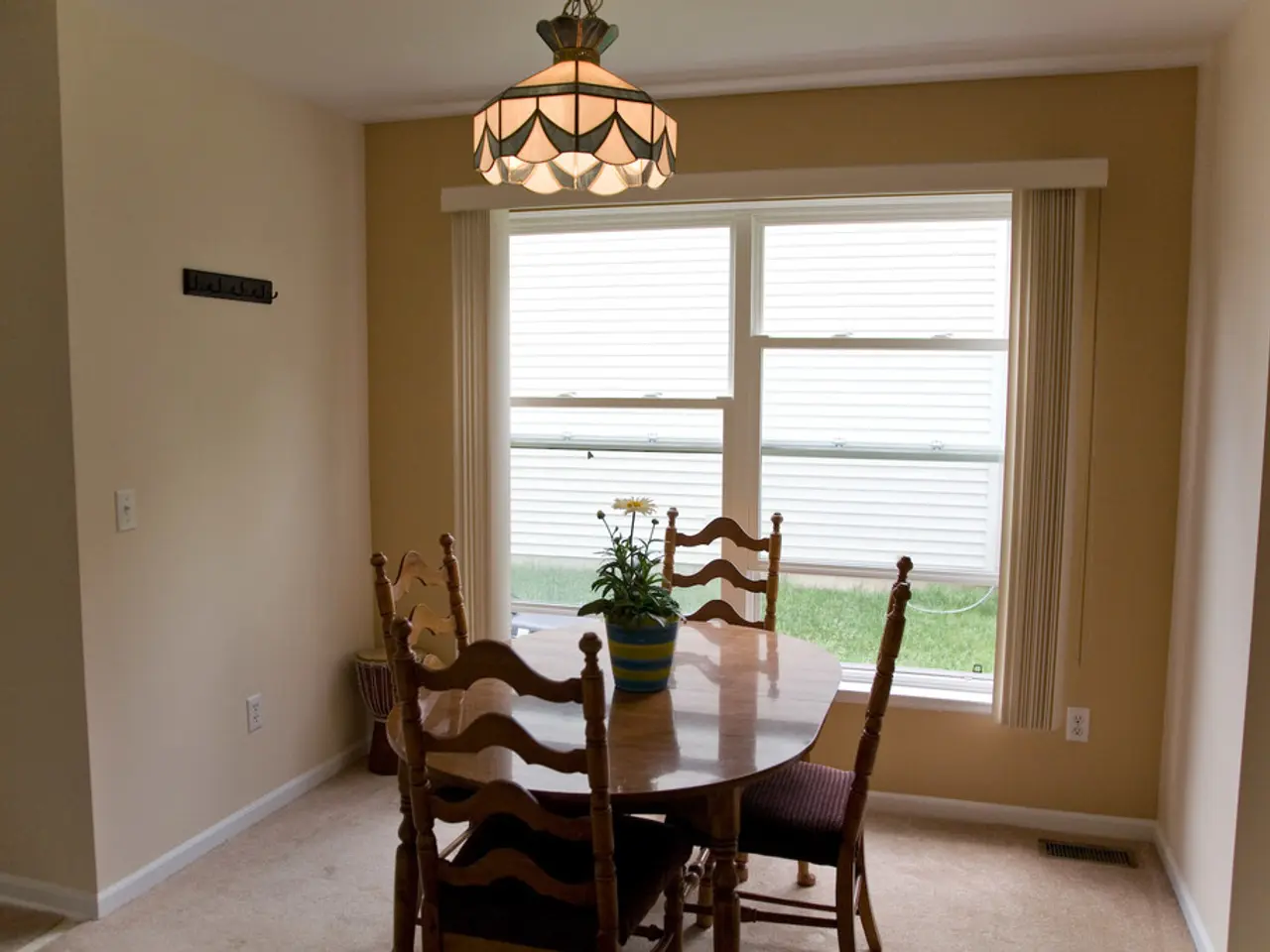Arranging House Plants in Your Living Space
In the quest for a minimalist living room or a windowless room that still feels alive and vibrant, houseplants can be the perfect solution. These green companions not only add a touch of nature to your interior design but also contribute to air purification and improved well-being.
When it comes to choosing the right plants for low-light spaces, there are several hardy, low-maintenance options that thrive under artificial lighting or minimal natural light. Some of these include the snake plant, ZZ plant, pothos, philodendron, Chinese evergreen, cast iron plant, and satin pothos.
The snake plant, also known as mother-in-law's tongue, is an attractive but unusual houseplant featuring sword-like leaf shapes with sharp points. It is very tolerant of low light and infrequent watering, preferring bright indirect light but surviving with just artificial overhead lighting typical in offices or rooms without windows.
The ZZ plant is extremely hardy and thrives in low to no natural sunlight, doing well under fluorescent or LED lights. It is known for its robustness and ability to adapt to various lighting conditions.
Pothos is a versatile and rapidly growing vine that does well in low light. It is also forgiving if neglected, making it an ideal choice for those who may not have a green thumb.
Philodendrons are adaptable with many varieties that grow well in low light. They can be trained to climb or stay compact in small spaces, and while they are toxic to pets, they can still be a great addition to your indoor garden.
The Chinese evergreen is popular for offices and malls due to its low-light tolerance. It requires moderate watering and can thrive in indirect/artificial light.
The cast iron plant is named for its toughness and broad leaves. It grows slowly but is very resilient in low light conditions.
The satin pothos (Scindapsus) is known for its attractive silver-speckled foliage, which adds aesthetic value to indoor spaces. It thrives in low light and can contribute to the brightening of your windowless or very dim environments.
Supplemental lighting, such as fluorescent or LED grow lights, for 12-14 hours daily can help these plants maintain steady growth in windowless or very dim environments but is not always necessary if artificial overhead lighting is consistent.
In the dining room, a Boston fern can be a striking centrepiece. These plants prefer moist but well-drained soil and a bright spot out of direct sunlight. They can also be hung from the ceiling above the table for a unique touch.
Peace lilies are low-maintenance plants that prefer a bright spot, out of direct light, and like the soil to be kept moist but well-drained. They can add a touch of elegance to any room.
When it comes to choosing the right pot for your houseplants, water is essential for their survival. Pots with drainage holes allow excess water to escape, preventing root rot. Use a quality potting mix to help keep houseplants healthy, and you may also wish to use plant food for added nutrition.
Using the same plant pot design in a range of sizes is a great trick for displaying indoor plants. The different-sized pots add structural interest to your interior design and ensure your indoor plants catch the eye.
Remember, no plant will grow in a completely dark room. All plants need at least some light to survive, but some prefer bright sunshine while others are happy in a dull corner. Humidity is essential for some plants to grow, and kitchens and bathrooms usually have the highest humidity in the house.
In the conservatory, you can go wild with plants, treating it as an extension of the garden, bursting with plant life. Houseplants help soften the edges of shelves and complement anything else your shelf might be home to, from books and photos to ornaments and collectables.
Devil's ivy is a trailing plant that can be trained to climb a moss pole and looks great spilling from high shelves or hanging planters. Spider plants are hardy, easy to care for, and can survive in relatively low light conditions. Corn plants (dracaena fragrans) are large plants that create an interesting focal point in a corner of the hallway.
In summary, no green thumb is required to keep indoor plants healthy. The key is choosing the right plant for the right space. With the right care and the right plants, your indoor spaces can be transformed into lush, green oases, bringing the outdoors indoors.
- For a vibrant and air-purifying home decor, consider adding a satin pothos (Scindapsus) to your brightening windowless or very dim environments.
- When arranging furniture in a minimalist living room, don't forget to incorporate appropriate plants like the snake plant or ZZ plant which thrive in low light conditions.
- To enhance your dining room's ambiance, place a Boston fern as a striking centerpiece in a bright spot, away from direct sunlight.
- When exploring online shopping sites for home and garden, look for pots with drainage holes to ensure your new houseplant companions have the correct environment for optimal growth.
- In the quest for personal growth and self-development, consider adding some educational resources about proper care for pets, relationships, travel, cars, and fashion-and-beauty into your reading list.





